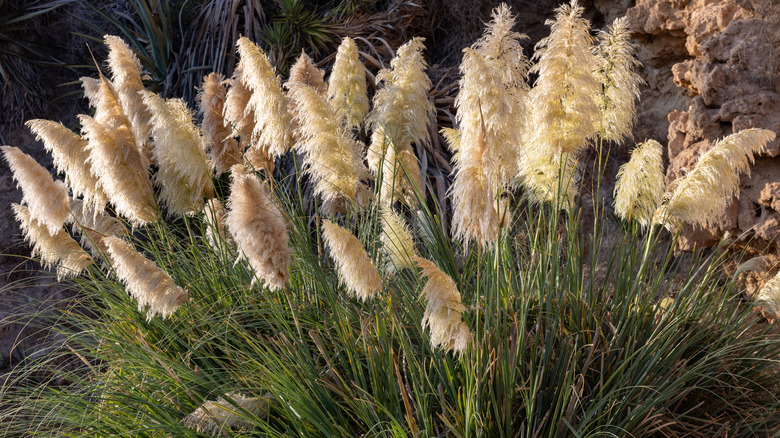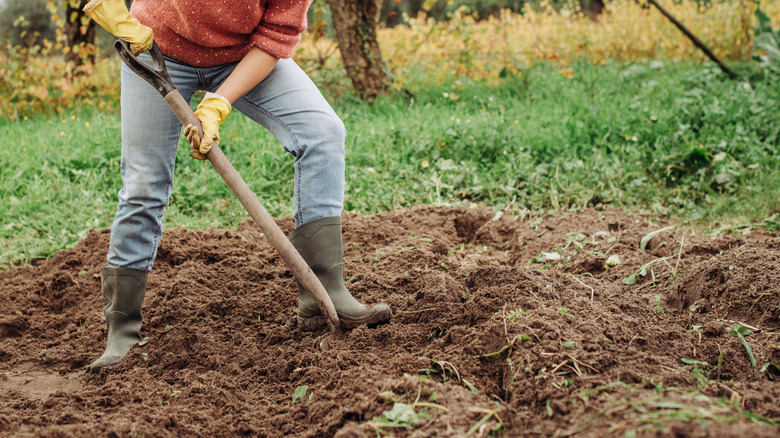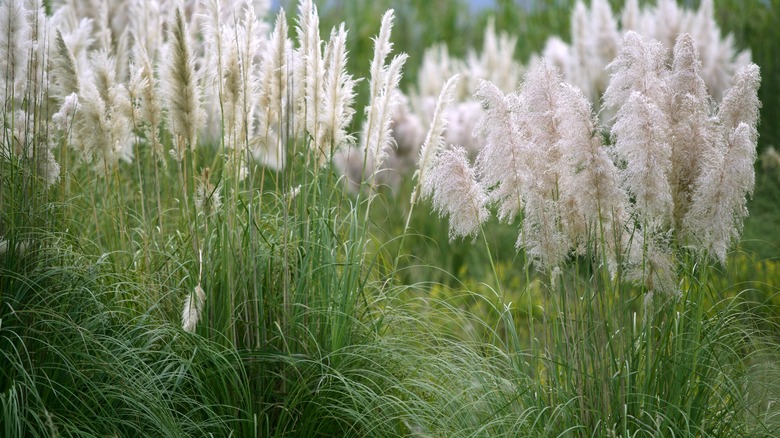The Best Time To Plant Pampas Grass To Add Gorgeous Interest To Your Yard
The beachy, Hamptons-like feel of pampas grass should be reason enough to add it to your yard. No matter where you live, this striking, tall, flowing grass makes you feel like you're near the ocean. Growing between 6 and 12 feet tall, this iconic plant adds a unique intrigue to any yard with its large size and showy plumes. It also acts as a natural privacy screen, especially when planted along property lines in clusters. While it's known as a summertime stunner, it also offers interest throughout the year. During fall, the plumes turn golden brown, creating a beautiful visual even against the snow.
If you're looking to add this fluffy, perennial grass to your landscape, you'll want to plant it at the right time. The best time to plant pampas grass is in the spring. Once established, pampas grass is a low-maintenance plant. It thrives in various types of soil, making it ideal for busy homeowners or new gardeners. However, pampas grass is a proliferate self-seeder due to its feathery plumes and can easily take over and become invasive. One species, pink pampas grass, is invasive in some states. To prevent the spread of this invasive plant, buy female plants (the ones with showier plumes ) or cut the plumes off and use them in your home to decorate before they have a chance to seed.
What time of year is best to plant pampas grass?
While this mighty plant is resilient once it matures, pampas grass needs time to establish its roots, especially when first planted. Planting pampas grass in the spring from April to mid-June gives it ample time to grow a robust root system and to get the strength it needs to grow throughout the year. When the soil starts to warm in the spring months, and sunlight conditions lengthen, the roots can develop properly, growing deep into the ground. This mammoth grass is easy to grow and grows fast once established, and within a few months of planting, it can reach its full height.
Whether you choose to grow pampas grass from seed or a cutting, both should be planted in the spring. If you choose to grow from seed, you'll want to start seeds indoors between February and April – 6-8 weeks before the last frost date in most regions. This gives you a headstart and a better chance that your grass will grow once transplanted outdoors.
When to propagate pampas grass?
Propagating pampas grass is a reliable way to increase the number of your plants quickly. Division propagating is great because you don't have to wait for seeds or cuttings to germinate or root. You'll instantly have a new, already-grown plant. The best time to propagate and plant is in the spring. This gives the newly separated plants time to get established before winter, and the mild weather helps them tolerate propagation and better acclimate to being transplanted.
The propagation method for pampas grass involves dividing already established parent plants into smaller clumps of plants. Before you separate the plants, you'll want to trim the old grass stalks down to the plant's new growth. This helps expose the new growth to resources like sunlight and keeps your plant healthier. Once that is done, look for a section of the plant that you want to split and carefully dig it up, separating the clump and cutting any roots attached to the main plant if needed. Plant the propagated sections immediately to give them the best chance to adjust and get established.
Cutting old growth is not a one-time event, though. Once your plant matures, you'll want to cut the old growth back to the new growth each year in the late winter between February and March. This helps ensure that the plant puts its energy into new growth, providing you with lovely ornamental grass for years to come.


